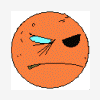Fantastic question, Syrena!
I may have to check out that link of yours, as I'm curious as to what it holds!
For those that prefer to skim: tldr- Yes, story structures can be very useful in game design due to the ability to break a story into logical parts--- ideal for game design, yes?!
Story structures are interesting! And the reason I'm a firm believer they can aid game design is the fact that game design draws on many art fields. And many arts will have structure, say, for music, painting and even writing - to say a few.
A reason story structure is useful is because it allows us to break a story into parts, almost modular -- at least in most cases they would have to follow an order. So for example, the story structure allows a complete story to be broken into, say, sixteen parts. Tie that with setting: world design, which can be broken down into level design... This means story can fit very nicely into game design at its core. Yeah?!
3-Act structure. The thing about this structure is that it's a little too simple for any kind of story telling. Yes, it was touted many moons ago in the movie field (but actually accredited to Aristotle (and how long ago was that!)), but story structure has come a long way since the conception of the 3-Act structure.
My current project's focus is to use story structure as a core starting point to plan the entire game before I even sit down and model/program, etc. And I did mention in your other thread about Dan Wells' explanation of the '7-point story structure'. The reason I think this is a good starting point for story structure is the fact it can be broken down. You can watch it on youtube and watch it all. As then you can see how the seven points can end up being, say, sixteen steps(that could equate to sixteen levels!).
There are plenty of story structures out there and I'm sure many can work. Those structures work for movies or novel writing.
For example, if I were to concentrate on character I would use the 7-pointer but use Lagos Egri's concept for character in story. And he was a play-writer.
Anyway, if you have any questions, feel free to ask. I spent several years studying creative writing - it is a fascinating subject. I'll be happy to help, anyway.







